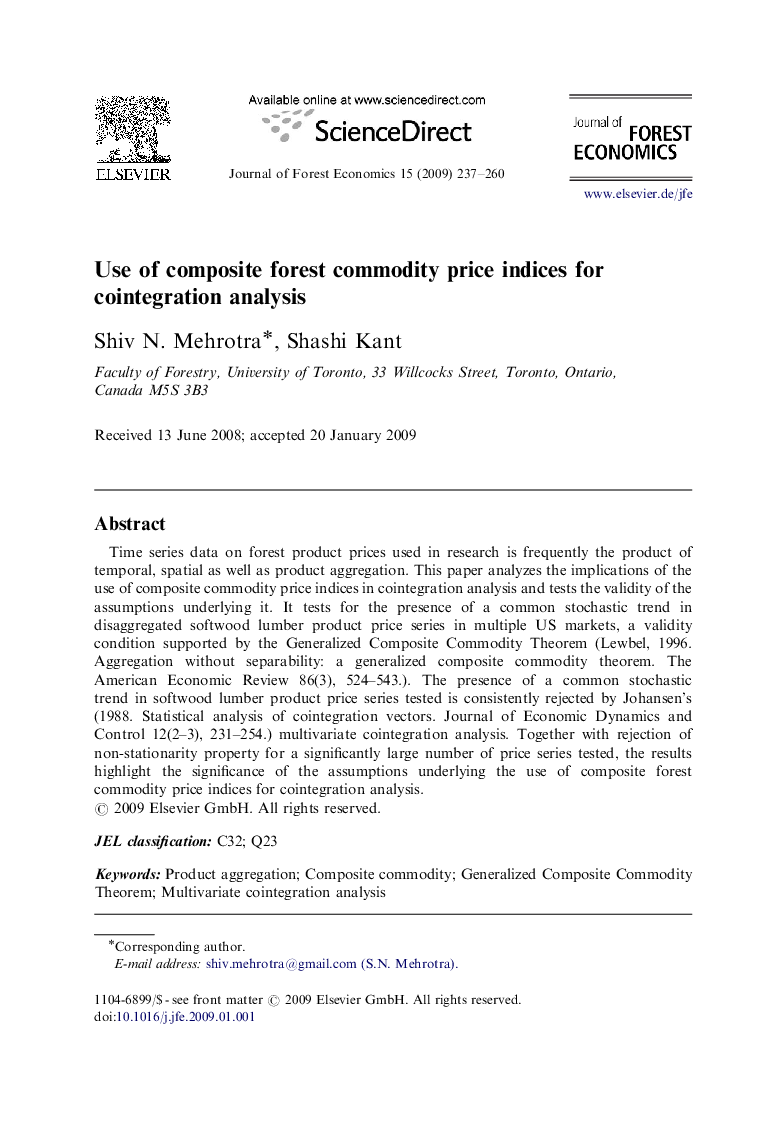| Article ID | Journal | Published Year | Pages | File Type |
|---|---|---|---|---|
| 92123 | Journal of Forest Economics | 2009 | 24 Pages |
Time series data on forest product prices used in research is frequently the product of temporal, spatial as well as product aggregation. This paper analyzes the implications of the use of composite commodity price indices in cointegration analysis and tests the validity of the assumptions underlying it. It tests for the presence of a common stochastic trend in disaggregated softwood lumber product price series in multiple US markets, a validity condition supported by the Generalized Composite Commodity Theorem (Lewbel, 1996. Aggregation without separability: a generalized composite commodity theorem. The American Economic Review 86(3), 524–543.). The presence of a common stochastic trend in softwood lumber product price series tested is consistently rejected by Johansen's (1988. Statistical analysis of cointegration vectors. Journal of Economic Dynamics and Control 12(2–3), 231–254.) multivariate cointegration analysis. Together with rejection of non-stationarity property for a significantly large number of price series tested, the results highlight the significance of the assumptions underlying the use of composite forest commodity price indices for cointegration analysis.
